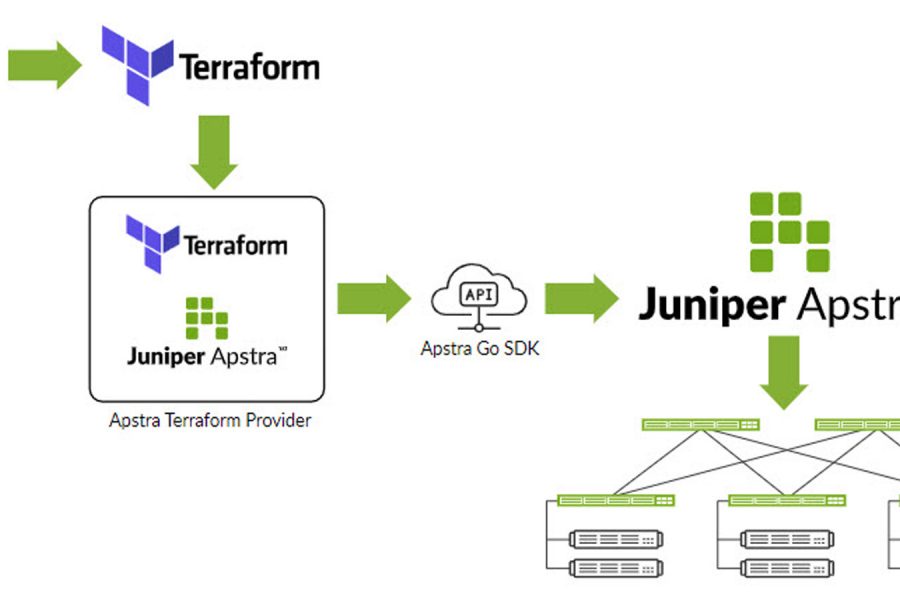Let’s start with some breaking news! Juniper Networks recently announced an exclusive IP licensing deal with Netsia, a subsidiary of Türk Telekom Group company (Argela in the USA), an applied research organization specializing in 5G and a world-wide leader in Open RAN, giving us exclusive rights to their RAN Intelligent Controller (RIC) source code and patents. This comes with a transfer of key subject matter experts from Netsia to Juniper, expanding our existing team of O-RAN and 5G experts.
With this news, we are adding fuel to the Open RAN fire, just as 2021 gets going, a year that many are already calling the year of Open RAN. Juniper is placing a firm foot into the disaggregated, software-defined radio domain, inching closer in our mission to bring the power of a secure, automated, cloud-native infrastructure to every part of the network.
We’ve been here before….and we’ve led the charge
Juniper has a history of leading major technology shifts in cloud and networking. Be it disaggregation with Contrail SDN to separate management and control, be it virtualization and containerization with innovations such as Contrail Cloud, Container Network Interface and Mist AI or be it distribution with the introduction of edge compute such as StackPath. With the move to 5G, the same technology shifts are happening in all parts of service provider networks from radio access to next-generation core. In radio access, what used to be proprietary boxes of radio heads and baseband units, are now disaggregated functions like RU, DU, CU-U and CU-P, many of which can be virtualized or containerized, such as a DU at the edge with a CU running in a datacenter. Furthermore, these functions are getting distributed with multiple permutations and combinations of them running at any point in the network based on the use case – at a cell site, at an edge cloudlet, at a central office or any datacenter in between. Open RAN takes it a step further by ensuring that the interfaces between these components are open, interoperable, intelligent, programmable and extensible, while adhering to the principle to centralize what you can and distribute what you must.
At Juniper, these are pages from our own playbook, where we have already demonstrated the value of Disaggregation, Virtualization, Distribution, Openness – across our WAN, datacenter and AI driven Enterprise solutions. And we are already working with several customers, such as Deutsche Telekom, to move key network functions to a cloud-native infrastructure at record speeds. As cloud takes over every part of the network, from access to transport to core, our journey is also moving forward, into the radio domain with the acquisition of RIC technology. Really, why stop at core, transport and edge?
Opening up the Radio Access Network
Bringing these shifts to the radio access domain is of particular significance, given that RAN has so far driven 70% of the network capex with equipment that typically comes from one, closed incumbent supplier. With 5G and specifically Open RAN, the opportunity now exists to allow for best-of-breed innovation in the radio domain in pursuit of cloud outcomes. While wide-scale commercial deployments of Open RAN may still be a few years out, the strengthening of the ecosystem must begin now so that the best-of-the best can partner and innovate together with service providers to fundamentally change how radio networks are deployed, managed and leveraged for value creation. Eventually, it is about democratizing networks, making them economically viable enough to connect the unconnected and densify further. It is about giving operators the freedom to choose and never be locked in again. It is about inviting rapid innovation and challenging the status quo.
With Open RAN, the door is now unlocked. Notably for Juniper and our service provider customers. We are building a platform to leverage two of our key strengths that will matter most for future networks:
- Secure and assured service experience, by using the RIC as a RAN controller (and slice manager) as part of an overall E2E slicing and orchestration overlay
- Move to AI-driven service experience, by using the RIC to create an open and extensible platform that allows running of our own or 3rd party applications (xApps/rApps, AI/ML based apps) and drive innovation and differentiation in the RAN
The RIC Secures & Assures Service Experience
Building on the first key value that the RIC brings to our customers – a path toward vendor agnostic E2E network slicing and orchestration. The industry is well aligned on the role of network slicing in guaranteeing verifiable or assured SLA at an application or at an end-user level, which is key for monetizing new services and new business models. While the industry is still discussing specific use cases for slicing, the potential is limitless – from spinning up new MVNOs or private enterprise network instances in a matter of minutes, to even doing so beyond home geographies to enter new markets. For that to work, slicing must be end-to-end, cutting across radio, transport, core and eventually across public clouds. Juniper is already a leader in 5G network slicing across the telco cloud and transport network domains, and with a RIC based radio controller + slice manager, we can now stitch the whole E2E slice together. Check out Juniper’s recent demonstration at the ORAN-Alliance, which showcases how network slices are created by our domain specific controllers – Contrail and NorthStar – and explains how network slicing can be used for Open RAN x-haul slicing and how we envision delivering service guarantees for 5G applications. No wonder it also got a mention in the latest press release by the ORAN-Alliance. In addition, have a look at the second Global O-RAN ALLIANCE Plugfest press release where Juniper participated with several other vendors to demonstrate accelerated readiness of multi-vendor Open RAN compliant network infrastructure.
The RIC Will Leverage AI and ML to Optimize User/App Experience & Operations
The second key value that the RIC brings is adding the next level of intelligence to the RAN, thanks to both near real-time and non-real-time RIC components, that allow xApps/rApps to be plugged right into the radio stack. These apps could either be homegrown, operator specific or onboarded via an open developer ecosystem. As AI/ML makes its way into each part of the network, the RIC becomes the home for AI/ML at the radio layer, enabling a profound impact on the actual end-user experience at one end, and network operations at the other. When it comes to realizing a truly AI-driven service experience, Juniper is already leading in the enterprise Wired and Wireless LAN space with its groundbreaking Mist AI that has wowed our biggest enterprise customers like Walmart. So why stop there? We envision bringing the same value to service provider networks by delivering an AI-driven experience and cross-domain AI-driven operations. While much more work is still to be done in this area, we can hit the ground running with our licensed acquisition of RIC from Netsia.
Netsia and Juniper – a Powerful Combination
Netsia is widely regarded as an industry-leading innovator in the RIC landscape, with over 20 patents and patent applications for its technology to date. They are one of the founding members of O-RAN Alliance, along with lead positions in WG1 (Use Cases and Overall Architecture), WG2 (Non-real-time RIC and A1 Interface) and WG3 (Near-real-time RIC and E2 Interface). As the Chair of the Slicing Task Group, Co-chair of Use Case Task Group, Editor of WG2 and WG 3, Netsia has made significant contributions in defining O-RAN slicing architecture, related interface impacts and overall evaluation, definition and evolution of use-cases together with other O-RAN partners. Juniper is also actively participating in key workgroups within leading Open RAN forums such as Open RAN Policy Coalition, TIP – OpenRAN and O-RAN Alliance. We are contributing to O-RAN Alliance WG 2, WG 4 (Open Fronthaul Interfaces), WG 6 (Cloudification and Orchestration) and leading WG 9 (Open X-haul Transport) as co-author of Timing and Synchronization and xHaul Ethernet Transport Network specifications. Together, we are championing the cause of Open RAN not just in definition but in action.
Netsia’s Dynamically Programmable RAN solution is in the advance stage of development following approximately five years of rigorous R&D, with numerous proof-of-concept trials already successfully completed or underway with major service providers around the world. ProgRAN provides an SDN-based RAN framework for 5G, radio channel and resource management, RIC for scheduling, handovers, SON, link aggregation & multi -RAT management. Juniper’s existing telco/edge cloud solution combined with Netsia’s RIC creates a one-stop solution for service providers to host any Open RAN vendor and create an ecosystem for Intelligent RAN.
The Endgame: Cloud + 5G + AI
As our CEO, Rami Rahim, has said, ‘cloud is the network, and the network is the cloud’. Juniper is passionate about bringing cloud outcomes to every part of the service provider network. The onboarding of RIC solutions from Netsia and our partnership with Türk Telekom scheduled to trial an Open RAN infrastructure in late 2021 takes us one step closer to unleashing the full power of Cloud + 5G + AI, enabling service providers to transform their business, thrive amidst new kinds of competitors and break the shackles of legacy ecosystems.
Forward-Looking Statements
This blog contains forward-looking statements within the meaning of applicable securities laws. All statements, other than statements of historical fact, could be deemed forward-looking statements. Statements in this blog concerning Juniper Networks’ business, strategy and focus; the benefits of our agreement with Turk Telecom; our product roadmp; and our overall future prospects are forward-looking statements that involve a number of uncertainties and risks. Actual results or events could differ materially from those anticipated in those forward-looking statements as a result of several factors, including, without limitation, our ability to develop and commercialize the products contemplated in a timely basis or at all, potential benefits of the partnership to Juniper Networks and our customers, and other factors listed in our most recent report on Form 10-Q filed with the Securities and Exchange Commission. All statements made in this blog are made only as of the original date of this blog. Juniper Networks undertakes no obligation to update the information in this blog in the event facts or circumstances subsequently change.


